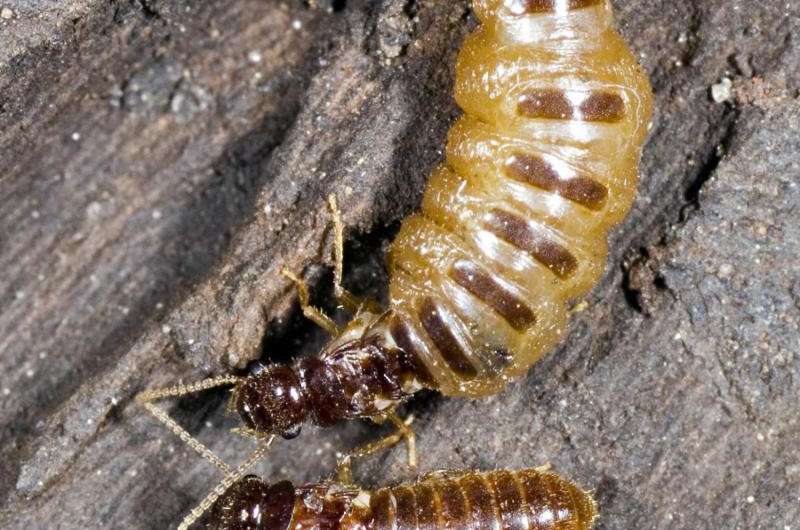Asexual succession strategy of termites

A study led by the Laboratory Evolutionary Biology and Ecology of the Université libre de Bruxelles shows that the humivorous French Guianan termite Cavitermes tuberosus routinely practice asexual queen succession (parthenogenesis).
Termite colonies are typically founded by a pair of sexually reproducing dispersers, which can sometimes be replaced by some of their full-sib offspring, resulting in inbreeding among the new cohort of reproductives.
A study led by Denis Fournier and Yves Roisin, lab Evolutionary Biology and Ecology, Faculty of Science, Université libre de Bruxelles, shows that the humivorous French Guianan termite Cavitermes tuberosus routinely practice asexual queen succession (AQS): the queen is replaced by daughters produced by parthenogenesis, which mate with the primary king and never leave the nest. Conversely, workers, soldiers and most primary reproductives, that are all exposed to the harsh environmental conditions that occur outside their nest, were produced sexually.
The termite Cavitermes tuberosus gets thus the benefits of asexual and sexual reproduction, and bypasses the costs associated with these reproductive strategies. We suggest that AQS has the selective advantage of avoiding incest and inbreeding, may boost the colony's growth rate and confer benefits related with a small size and high mobility of colonies.
More information: Denis Fournier et al. Facultative asexual reproduction and genetic diversity of populations in the humivorous termite, Proceedings of the Royal Society B: Biological Sciences (2016). DOI: 10.1098/rspb.2016.0196
Journal information: Proceedings of the Royal Society B
Provided by Université libre de Bruxelles

















